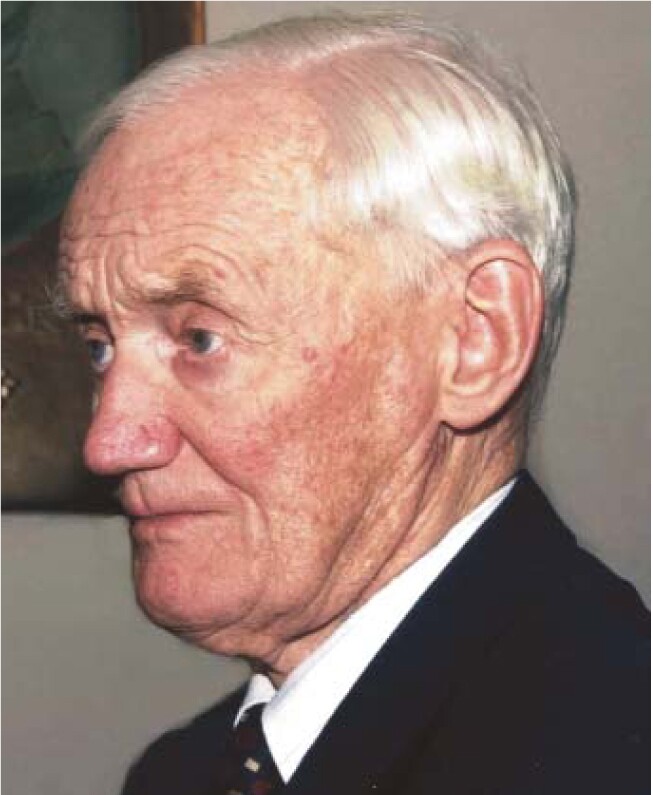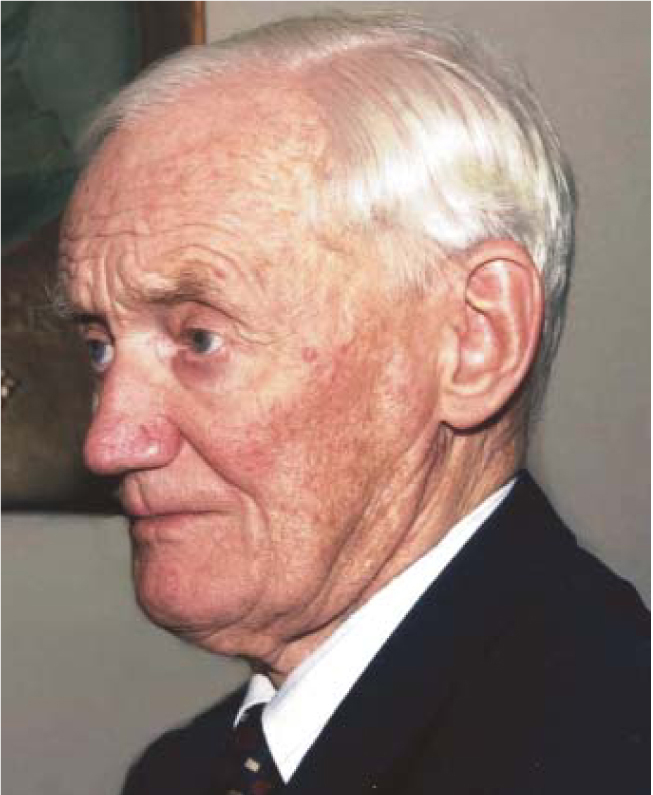Kai Manne Börje Siegbahn
DOI: 10.1063/1.2812132
Kai Manne Börje Siegbahn, a 1981 Nobel laureate internationally recognized for his foundational contributions to electron spectroscopy, particularly to electron spectroscopy for chemical analysis (ESCA), died 20 July 2007 of a heart attack at his summer residence in Ängelholm, Sweden. Throughout his career, Kai pursued the tradition of physics research in Sweden, focusing on very accurate and precise measurements enabled by state-of-the-art instrumentation.
Kai was born on 20 April 1918 in Lund, Sweden, where his father, Manne Siegbahn, was a professor of physics at Lund University. The elder Siegbahn, who developed instrumentation for high-precision and high-resolution x-ray spectroscopy, received the Nobel Prize in Physics in 1924. Soon after Kai’s birth, his father transferred to Uppsala University to occupy the physics chair that Anders Ängström had held when doing his groundbreaking work in spectroscopy.
Kai attended high school in Uppsala and studied mathematics, chemistry, and physics at Uppsala University. He moved to the Nobel Institute for Physics in Stockholm (now called the Manne Siegbahn Institute for Physics), where he obtained his PhD; his thesis was titled “Studies in Beta Spectroscopy.”
After a short term as a professor of physics at the Royal Institute of Technology, Kai returned to Uppsala University in 1954 to the physics chair that his father had occupied. To borrow from playwright August Strindberg, “He came as a whirlwind in April,” and his immediate impact was visible in areas ranging from the newly refurnished library and reading room to research activities pursued with sudden intensity. Kai was particular about his environs and how they looked. Equipment should meet the highest technical standards—and also look nice and neat.
Kai nearly always attended the daily 9:00am seminar and took a seat in the front row. With his boundless energy and enthusiasm, he exemplified the ideal that hard work is the secret to success.
Kai devoted much of his career to developing sophisticated instrumentation with ever-increasing resolution to study beta decay. He often said, “Increase the resolution, and you will surely discover new phenomena.” He documented his own discoveries in nuclear spectroscopy and electron spectroscopy as editor of the classic text Alpha-, Beta-, and Gamma-Ray Spectroscopy (North-Holland, 1965), a compendium of articles by 77 internationally recognized authors whom Kai knew personally and had recruited.
His outstanding international network expanded when in 1956 he founded and served as editor of the journal Nuclear Instruments and Methods. That network was evident from the proliferation of foreign visitors to the physics department at Uppsala. My fellow graduate students and I were not always aware of just how famous many of those visitors were. On one occasion, after I showed a visitor around, I asked, “And what have you been doing?” When he answered, “I invented radar,” I decided not to ask any more questions.
The accuracy and precision with which nuclear gamma radiation can be measured are often determined by how well the binding energies of the electrons in the atomic shells are known. The traditional method, x-ray absorption spectroscopy, to a large extent developed by Manne Siegbahn, had many limitations. Kai applied a different method, measuring the kinetic energies of the expelled electrons from a sample irradiated by x rays of known energy. Although that method had previously been tried not long after the discovery of x rays and shortly after a seminal paper by Albert Einstein on the photoelectric effect, it was limited by the resolution of the electron spectrometer. By making use of the best available electron spectrometer, an iron-free double-focusing beta-ray spectrometer, Carl Nordling, Evelyn Sokolowski, and I were able to obtain a resolution that far exceeded conventional x-ray absorption. A large number of elements were investigated using this new method, and they became the basis for a table of atomic binding energies.
We had a major scientific breakthrough, a good example of serendipity in science, when we applied photoelectron spectroscopy to chemical analysis, specifically of the so-called chemical shifts. One evening I was working with Nordling to see whether photoelectron spectroscopy could be developed into a quantitative analysis method for light elements. To calibrate our spectrometer, we were looking for sodium sulfate. The chemical storage room was locked, but the photographic darkroom was not. In there was a compound with similar composition, Na 2S2O3—fixing salt. The sodium and the oxygen signals developed nicely as clearly distinguishable peaks in the spectra. However, the sulfur peak was different. It was not one peak as expected but two. We knew enough chemistry to know that fixing salt is sodium thiosulfate, which means that one oxygen atom in Na 2SO4 has been replaced with a sulfur atom that retains the valence state of oxygen, −2, while the other sulfur atom has a valence state of +6. The two peaks we had observed originated from the two different sulfur atoms. Not only was the photoelectron method a promising technique as a quantitative chemical analysis method, but more important, it could be used to investigate the valence state of the atoms.
Kai was pleased when we met the following morning, for he had seen the product of the prior night’s work on his desk. We all realized the potential of the discovery; Kai quickly reallocated resources toward the new technique, which he gave the acronym ESCA. Within a few years, the Uppsala group could boast an international leadership position in the field while, simultaneously, several groups around the world initiated activities in the new area of research.
Kai’s ultimate recognition from the scientific community came with the Nobel Prize in Physics in 1981 “for his contribution to the development of high-resolution electron spectroscopy.” He shared the prize with Arthur Schawlow and Nicolaas Bloembergen.
The Nobel Prize was the culmination of a series of distinguished international awards, honorary doctoral degrees, and academy memberships Kai received in his lifetime. They all pay tribute to a man who today would be called a successful scientific entrepreneur: a dedicated scientist, an engineer who was fascinated by the latest technological innovation, a businessman who could both allocate and attract money for important scientific research, a research manager, and a champion for physics in Sweden.

Kai Manne Börje Siegbahn
TEDDY THORNLUND

More about the Authors
Stig B. Hagstrom. Stanford University, Stanford, California, US .
